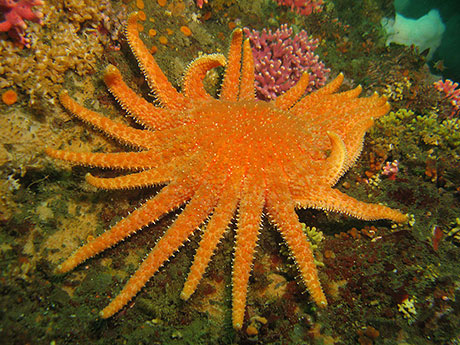The sunflower star was listed as critically endangered by the International Union for Conservation of Nature (IUCN) on December 10, 2020. An estimated 5.75 billion sunflower stars have died due to sea star wasting syndrome with the global decline in population calculated to be 90.6%. The assessment is based on 61,000 surveys from 31 datasets throughout its range that stretches from Alaska to Baja California, Mexico. ODFW contributed to the data used in the analyses. These data do not show any signs of recovery in any region since the outbreak of the disease began. The sunflower star is nearly absent in the marine waters off the west coast of North America with the few exceptions being in the Salish Sea, British Columbia, Alaska, and a handful of sightings off the coasts of Oregon and Washington. The sunflower star is a key predator of sea urchins, whose population have increased dramatically in many regions since the decline in the sunflower stars began. Scientists think that there is little chance of rapid recovery in U.S. water unless there is some form of intervention. Research is getting started to experiment with captive breeding in hopes of eventually being able to reintroduce this keystone species to areas where it is now absent. In August 2021 a petition was filed to list the sunflower star as Threatened or Endangered under the U.S. Endangered Species Act and in December 2021 NOAA Fisheries announced that it found substantial new information presented in the petition and that they are initiating a full review of its status. ODFW along with other researchers are working to provide the types of scientific information directly to NOAA Fisheries that it has asked for its review.

